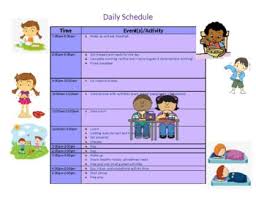Ah, summer. That magical time when bedtimes stretch a little later, popsicles become a food group, and kids suddenly seem to have the energy of a triple-shot espresso. If you’re a nanny (or parent!) staring down a 10-hour day wondering how to actually keep everyone happy, fed, learning, and not melting into a screen-time puddle… we’ve got you.
At Capitol Park Nannies, we know summer doesn’t have to be chaotic—it can be structured, fun, and full of meaningful moments. Whether you’re caring for toddlers or tweens, our Ultimate Summer Schedule will help you create calm, foster creativity, and enjoy the sunshine without the burnout.
And yes, there’s a downloadable sample routine by age range—because you’re organized like that.
_________________________________________________________________________________________________________________________________________
☀️ Why a Summer Schedule Matters
Kids thrive with rhythm and routine—even when school’s out. A thoughtful schedule:
- Helps children feel secure and know what’s coming next
- Supports developmental needs (learning, rest, play, nutrition)
- Prevents the “I’m booooored” spiral
- Makes the nanny’s (or sitter’s) day smoother and more predictable
But let’s be real: not all schedules are created equal. They have to be flexible, age-appropriate, and easy enough to follow in the real world (you know, the one with traffic delays, diaper blowouts, and spontaneous sprinkler parties).
_________________________________________________________________________________________________________________________________________
Sample Summer Routine by Age Group
These routines are built to be realistic, not rigid—think gentle flow, not military precision. Each one includes ideas for learning, movement, rest, meals, creativity, and free play.
Download your printable version here: The Ultimate Summer Schedule for Kids (That Nannies Can Actually Stick To!) By Capitol Park Nannies.pdf
1. Ages 0–2 (Babies & Toddlers)
7:00 AM – Wake up + breakfast
8:00 AM – Morning walk or sensory play (water, bubbles, textures)
9:00 AM – Nap
10:30 AM – Snack + storytime or music
11:30 AM – Lunch
12:00 PM – Outdoor tummy time or crawling/exploring
1:00 PM – Afternoon nap
3:00 PM – Snack + soft indoor play (blocks, stacking cups)
4:30 PM – Family FaceTime / calm music / cuddles
5:00 PM – Dinner + wind-down routine
Pro tip: Stick to the child’s existing sleep/eat routine and gently add variety with sensory bins, stroller walks, or music.
____________________________________________________
2. Ages 3–5 (Preschoolers)
7:30 AM – Wake up + breakfast
8:30 AM – Arts & crafts or themed learning (colors, numbers, letters)
9:30 AM – Outdoor play (water table, playground, scavenger hunt)
11:00 AM – Snack + storytime or puppet play
12:00 PM – Lunch
1:00 PM – Quiet time or nap
2:30 PM – Educational game or music/dance party
3:30 PM – Snack + fine motor play (Legos, puzzles)
4:30 PM – Free play + clean-up routine
5:00 PM – Dinner prep help (washing veggies, mixing)
Pro tip: Choose a weekly “theme” (e.g. bugs, outer space, animals) to guide crafts, books, and activities!
____________________________________________________
3. Ages 6–9 (Early Elementary)
8:00 AM – Wake up + breakfast
9:00 AM – “Brain time” (workbook, reading, journaling)
10:00 AM – Outdoor activity (bike ride, obstacle course, chalk art)
11:30 AM – Snack + creative play (LEGO, drawing, imaginative games)
12:30 PM – Lunch + kid-led storytelling
1:30 PM – Rest time (quiet reading, audiobook, puzzles)
2:30 PM – Science experiment or baking activity
3:30 PM – Snack + screen time (educational app or movie)
5:00 PM – Clean up + independent play
Pro tip: Let older kids “co-create” the plan. They love input and responsibility!
____________________________________________________
4. Ages 10+ (Tweens)
8:30 AM – Wake up + breakfast
9:30 AM – Independent learning (book, writing, project)
10:30 AM – Physical activity (bike, hike, yoga, online workout)
12:00 PM – Lunch + free time
1:30 PM – Volunteer project or creative outlet (coding, crafts, making a comic)
3:00 PM – Social connection (friend hang, call a cousin, pen pal letter)
4:00 PM – Snack + screen time
5:00 PM – Help prep dinner or plan tomorrow’s activities
Pro tip: Balance their growing need for independence with opportunities for choice, connection, and accountability.
_________________________________________________________________________________________________________________________________________
Schedule Tips for Nannies & Sitters
- Use a visual schedule for younger kids—pictures help!
- Be flexible—allow for mood changes, weather, and unexpected joy.
- Build in transition time between activities to reduce stress.
- Use timers or music cues for smooth shifts (like a cleanup song).
- Prep ahead—have a few “boredom busters” ready to go.
_________________________________________________________________________________________________________________________________________
Final Thoughts from Capitol Park Nannies
Summer days can be long—but they don’t have to feel endless. A great routine brings a sense of calm to the chaos and allows for connection, learning, and lots of fun. Whether you’re a seasoned nanny, a weekend sitter, or a family looking for support, our schedules are here to help you make the most of every sunny day.
Grab your free Summer Schedule Download now and start planning a season full of growth, giggles, and good vibes.
And remember: you’ve got this. And we’ve got you.






